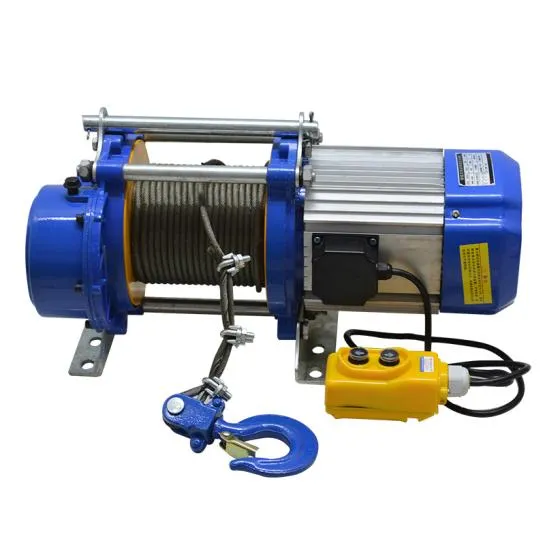


Understanding Overhead Crane Weight Scales Importance, Mechanism, and Benefits
Overhead cranes are vital tools in industries ranging from manufacturing to shipping. Known for their ability to lift heavy loads with precision and efficiency, these cranes are indispensable in environments where material handling is crucial. A key component of enhancing their operational effectiveness is the overhead crane weight scale. This article delves into the importance of these weight scales, their mechanisms, and the benefits they provide.
Importance of Overhead Crane Weight Scales
Accurate weight measurement is crucial for safety, efficiency, and compliance in material handling. Overhead cranes often lift hefty loads, and if these weights are miscalculated, it can lead to catastrophic failures, including equipment damage and workplace accidents. Implementing a weight scale on an overhead crane ensures that operators can accurately and easily identify the weight of the load before lifting.
Moreover, many industries are governed by strict regulations regarding weight limits. For instance, in construction, mining, and manufacturing sectors, exceeding the weight capacity of cranes can result in legal penalties. Compliance with these regulations is not merely an issue of legality; it is also an aspect of organizational responsibility to ensure a safe work environment.
Mechanism of Overhead Crane Weight Scales
Overhead crane weight scales typically function through the principle of load cells. A load cell is a type of transducer that converts force into an electrical signal. When weight is applied to the crane hook or the scale, the load cell detects the force and generates an electrical signal proportional to the weight. This signal is then processed and displayed on a digital readout, providing operators with real-time weight information.
There are various types of load cells used in overhead crane weight scales, including hydraulic, strain gauge, and pneumatic cells, each with unique characteristics suited to different environments and applications. Generally, weight scales can be integrated into the crane’s operation system, allowing for streamlined data collection and monitoring.
Benefits of Using Overhead Crane Weight Scales

The advantages of using weight scales in overhead cranes are multifaceted.
1. Enhanced Safety The primary benefit is improved safety. Accurate weight measurement minimizes the risks associated with overloading. This, in turn, reduces the likelihood of accidents, equipment failure, and the associated costs of injuries.
2. Operational Efficiency With a weight scale, operators can make more informed decisions about load handling. Knowing the exact weight of a load allows for better planning and execution, leading to reduced downtime and increased productivity.
3. Maintenance of Equipment By preventing the overloading of cranes, weight scales help in prolonging the lifespan of the equipment. Over time, excessively heavy loads can wear down mechanical components and lead to costly repairs. Accurate weighing ensures that cranes operate within their designed capacity, thus requiring less frequent maintenance.
4. Cost-Effectiveness While there is an initial cost associated with equipping cranes with weight scales, the long-term savings far outweigh this expense. Reducing accidents, increasing productivity, and minimizing maintenance needs ultimately contribute to a stronger bottom line.
5. Improved Record Keeping Many modern weight scales come equipped with data logging capabilities, allowing for the automatic recording of weights lifted over time. This information can be invaluable for inventory tracking, compliance auditing, and analyzing operational patterns.
6. Versatility and Adaptability Overhead crane weight scales can often be used in various applications, adapting to different types of cranes and lifting scenarios. Whether installed on a fixed crane or a portable unit, these scales provide flexibility for various industrial needs.
Conclusion
In summary, overhead crane weight scales are an essential component of safe and efficient material handling operations. By ensuring that weight measurements are both accurate and reliable, industries can optimize their processes, enhance workplace safety, and maintain compliance with regulations. As industries continue to evolve, the integration of advanced technology in overhead crane systems, including weight scales, will only become more crucial, driving innovation and improvement in the way materials are managed.



